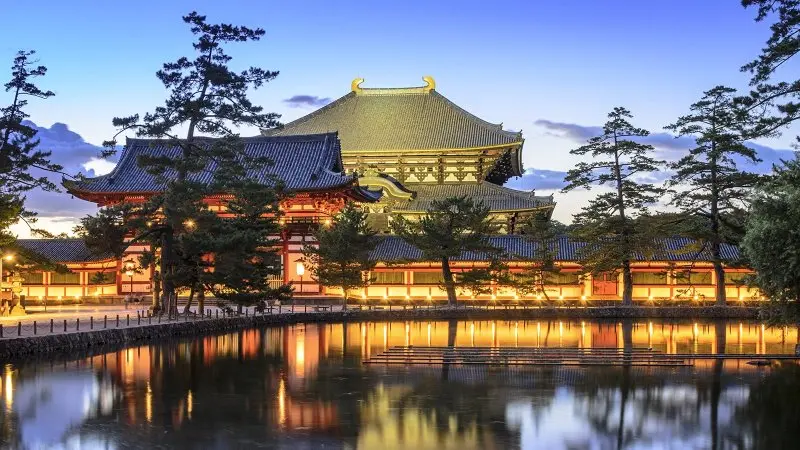Exploring the Natural and Cultural Treasures of Nara Park
Nara Park, located in the city of Nara, Japan, is a breathtaking destination that attracts visitors from all over the world. This expansive public park is renowned for its stunning natural beauty, historical significance, and its role as home to hundreds of wild deer.
With its unique blend of scenic landscapes, ancient temples, and friendly wildlife, Nara Park offers an unforgettable experience for anyone seeking to immerse themselves in Japan’s rich cultural heritage.
In this article, we will delve into the reasons why visiting Nara Park should be on every traveler’s bucket list, the best routes to reach the park, the optimal time to visit, and the must-see attractions within the park.
Why Visit Nara Park?
Nara Park, established in 1880, holds tremendous historical importance as it was once the site of the ancient capital of Japan, known as Heijo-kyo. The park’s expansive 660 hectares encompass numerous landmarks and monuments that provide a glimpse into Japan’s past.
One of the main highlights is the park’s population of wild deer, which are considered sacred and revered as messengers of the gods in Japanese culture. Interacting with these gentle creatures is a unique and memorable experience, allowing visitors to hand-feed and pet them.
The park is also home to several significant cultural and religious sites, including some of Japan’s oldest and most impressive temples. The most iconic among them is the Todai-ji temple, a UNESCO World Heritage Site and one of the largest wooden structures in the world. Inside the temple, you will find the awe-inspiring Great Buddha (Daibutsu), a colossal bronze statue that stands at over 15 meters tall.
Another notable temple is Kasuga Taisha, known for its stunning vermilion-colored buildings and its thousands of stone and bronze lanterns, which create a mystical atmosphere during evening visits.
Location and Route
Nara Park is conveniently situated in central Nara City, making it easily accessible from various parts of Japan. If you are traveling from Tokyo, the most straightforward route is to take the Shinkansen (bullet train) to Kyoto and then transfer to the JR Nara Line, which will take you directly to Nara Station. From Nara Station, it’s just a short walk or bus ride to the park’s entrance.
Once inside the park, it’s recommended to explore on foot to fully appreciate its beauty. The park’s layout is well-organized, with clearly marked paths that lead you through its different sections.
As you stroll through the park, you’ll encounter numerous historical sites, tranquil ponds, and serene gardens. The park’s wide-open spaces provide an excellent opportunity for picnicking or simply relaxing amidst nature’s splendor.
When to Visit
Nara Park is a year-round destination, each season bringing its own unique charm. Spring, specifically late March to early April, is a particularly popular time to visit as the park’s cherry blossom trees burst into bloom, creating a stunning display of pink and white petals.
The spring atmosphere in Nara Park is truly enchanting, with locals and tourists alike flocking to enjoy hanami (flower-viewing) parties beneath the blossoms.
Summer offers lush greenery and pleasant weather, although it can be hot and humid. Autumn, from late October to early December, is another splendid time to visit, as the park’s trees transform into vibrant hues of red, orange, and yellow, painting the landscape with breathtaking colors.
Winter has its own unique appeal, as the park’s serene ambiance is accentuated by the bare trees and the possibility of snowfall.
What to See
While every corner of Nara Park is worthy of exploration, there are several key attractions that should not be missed. As mentioned earlier, Todai-ji temple and its Great Buddha are the park’s most iconic landmarks. Witnessing the sheer size and grandeur of the statue is a humbling experience and offers a glimpse into the rich Buddhist heritage of Japan.
Another must-see spot is the Nara National Museum, located within the park. The museum houses an extensive collection of Buddhist art and artifacts, including ancient sculptures, paintings, and religious artifacts. Exploring the museum provides valuable insights into the cultural significance of Nara and its historical connections to Buddhism.
Additionally, the Isuien Garden, a traditional Japanese garden within the park, is a tranquil oasis that showcases the harmony between nature and architecture. The garden features meticulously landscaped ponds, stone paths, and meticulously pruned trees, creating a peaceful and picturesque setting that transports visitors back in time.
Conclusion
Nara Park offers an extraordinary blend of natural beauty, cultural heritage, and the unique opportunity to interact with wild deer. With its historical significance, awe-inspiring temples, and serene gardens, the park provides a captivating experience for all who visit.
Whether you are an avid nature lover, history enthusiast, or simply seeking a one-of-a-kind adventure, Nara Park is a destination that will leave an indelible mark on your memory. So, plan your visit, immerse yourself in the rich tapestry of Nara’s past, and create unforgettable moments in this enchanting park.

